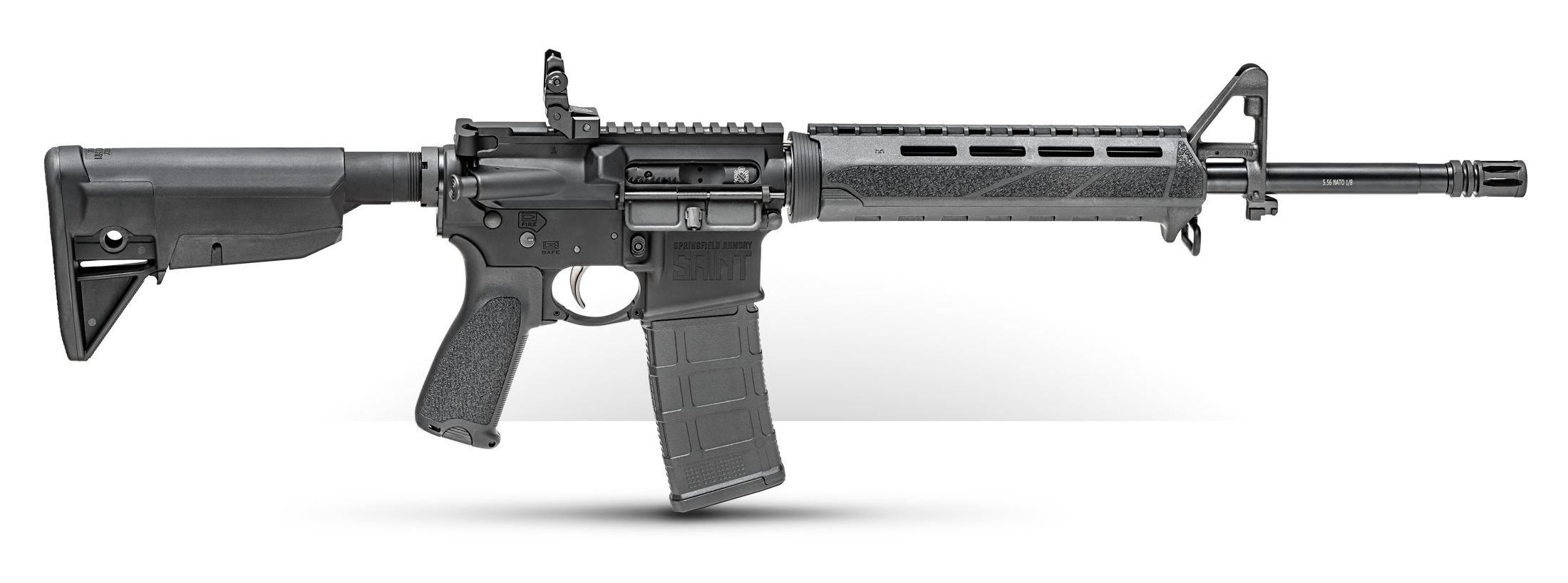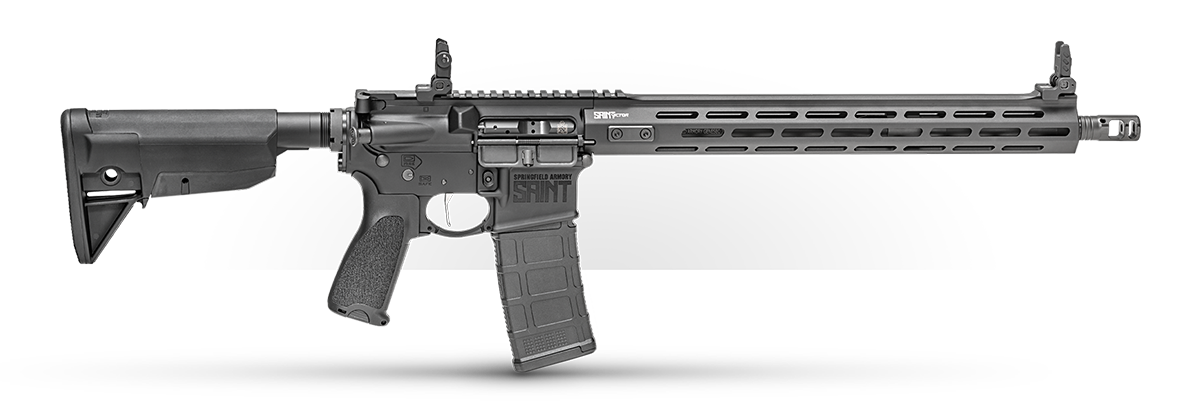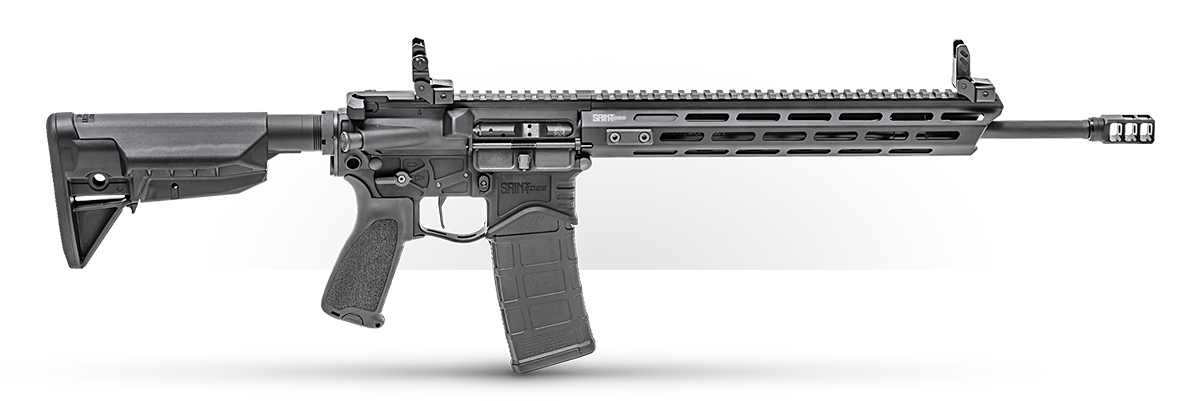Ascent of the SAINT: The Evolution of the AR
January 21st, 2021
7 minute read
The Springfield Armory SAINT is the ultimate iteration of the classic American People’s Gun. Featuring optimized features, a proven track record of quality and a range of price points suitable for just about every budget, the SAINT is the archetypal Modern Sporting Rifle. And the developmental process that brought us this superlative recreational, competition, and defensive tool is indeed thought-provoking.
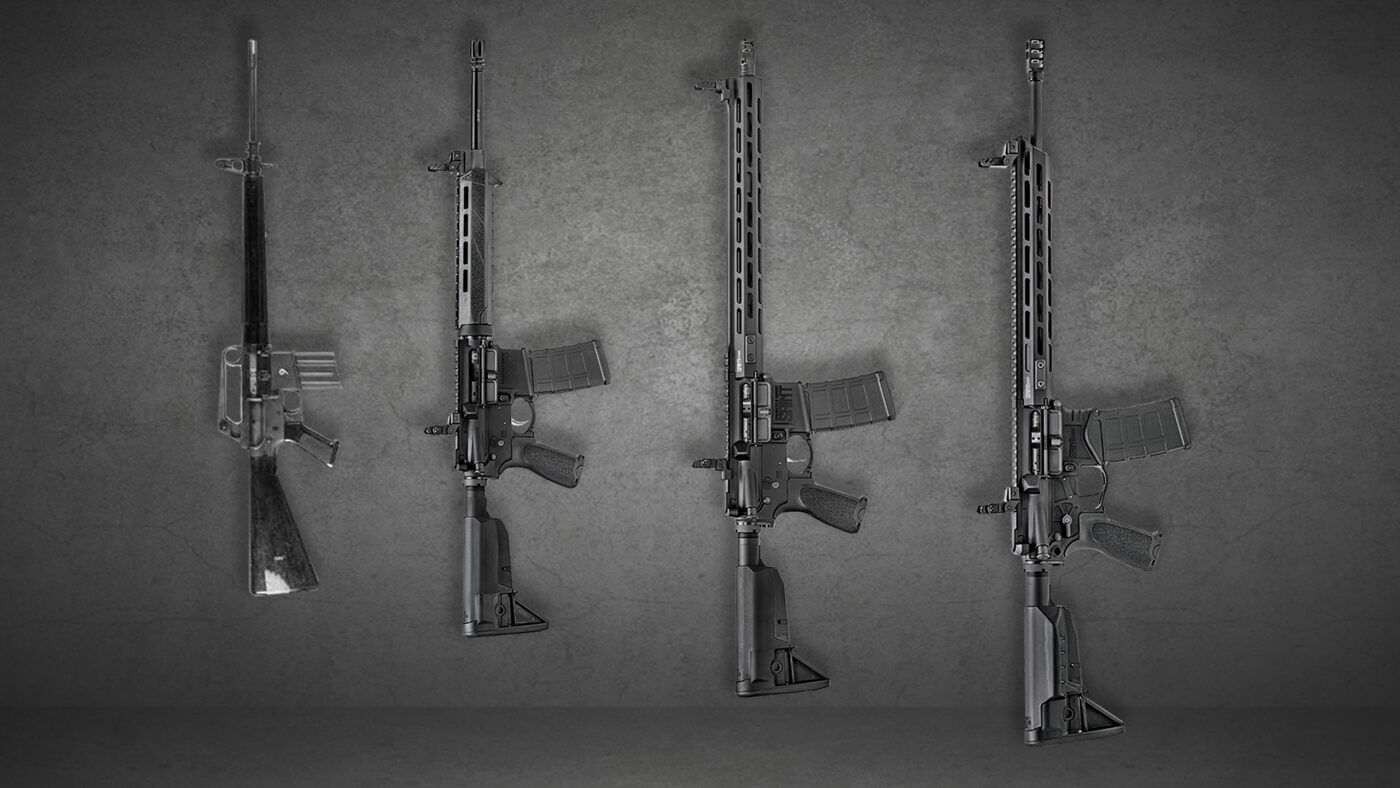
In the Beginning…
Back in mid 1950s, a gallon of gasoline would cost you 25 cents. Eisenhower occupied the White House, and Elvis Presley was a soldier. At the time, George Sullivan and Gene Stoner worked as part of a tiny little subsidiary of the Fairchild Engine and Airplane Corporation. Their modest little enterprise was based in Hollywood, California, and sported a grand total of nine employees. Sullivan, Stoner and company designed guns.
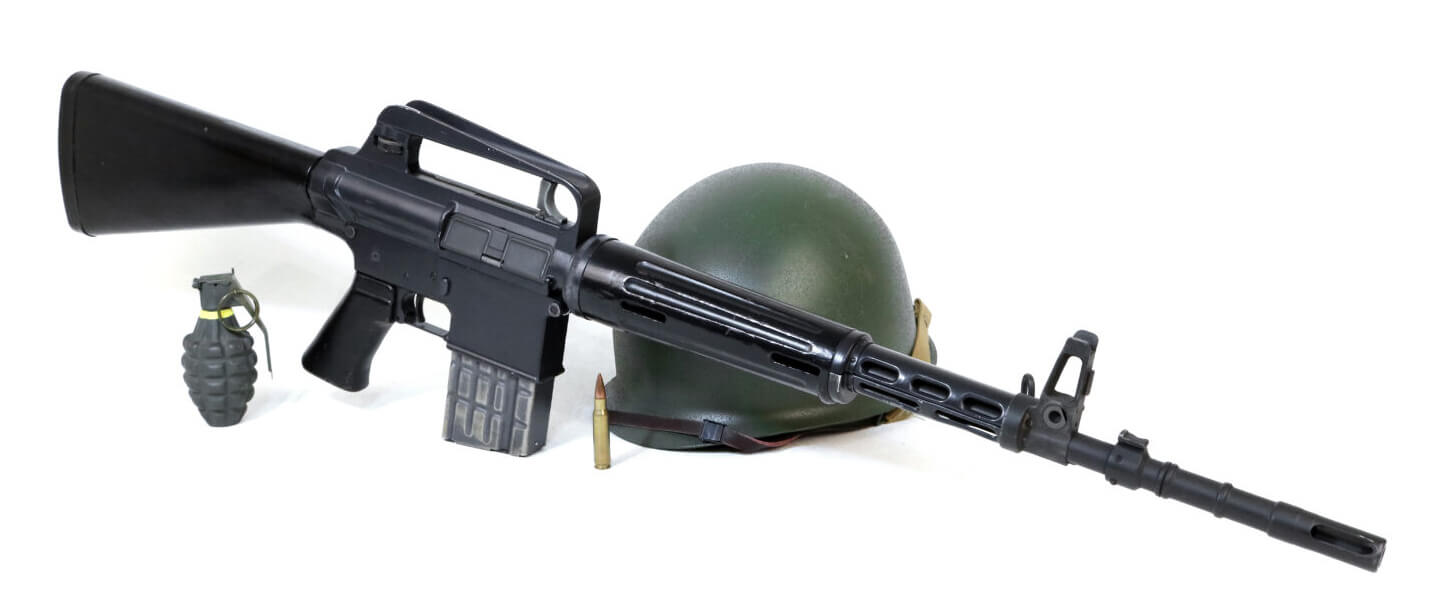
World War II had ground to a bloody halt about a decade prior, changing absolutely everything about life on planet earth. The unimaginable advances in aviation a mere three decades after the Wright brothers’ first flight had revolutionized materials science and engineering. Stoner and Sullivan sought to incorporate these radical new concepts and modern materials into the post-war world of small arms.
In this era, Parkerized steel and stained walnut still ruled the battlefield. Stoner’s revolutionary new AR design, by contrast, fired 7.62x51mm ammunition and weighed a paltry 6.86 lbs. empty. Stoner achieved these modest numbers by utilizing aircraft-grade aluminum for his receivers and cutting-edge phenolic furniture. He also used the simple, yet elegant direct gas impingement operating system to drive the thing.
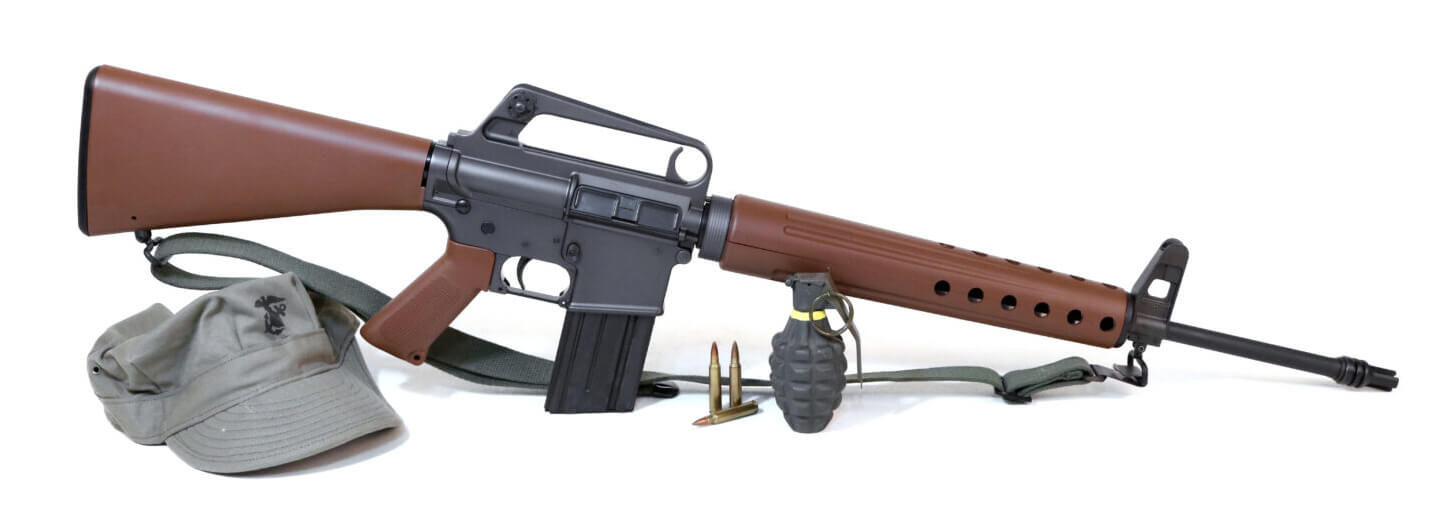
U.S. patent 2,951,424 in the name of the Fairchild Engine and Airplane Corporation covers the particulars. In essence, Stoner’s rifle and its direct gas impingement system used a length of stainless steel hydraulic tubing to pipe high-pressure gas into the bolt carrier, utilizing the bolt and carrier as a piston of sorts. The end result was exceptionally lightweight and beautifully accurate.

This AR was originally built under license in the Netherlands and saw action with Portuguese Special Forces in Africa. The basic design was subsequently scaled down to accept the new .223 cartridge, itself another Stoner design, for the CONARC trials. CONARC stood for Continental Army Command. This program was exploring a new lightweight rifle for the U.S. Military. In 1958, Stoner’s crew submitted 10 rifles and 100 of some 25-round magazines for consideration.
Arrested Development
We’ll skip a bit here in the interest of brevity. The political winds shifted as they are wont to do, and the U.S. found itself at war in Southeast Asia. When faced with a sprawling unfamiliar jungle fight, the military began coveting something both shorter and a bit handier than the full-sized M14 battle rifle. The solution was the space-age M16.
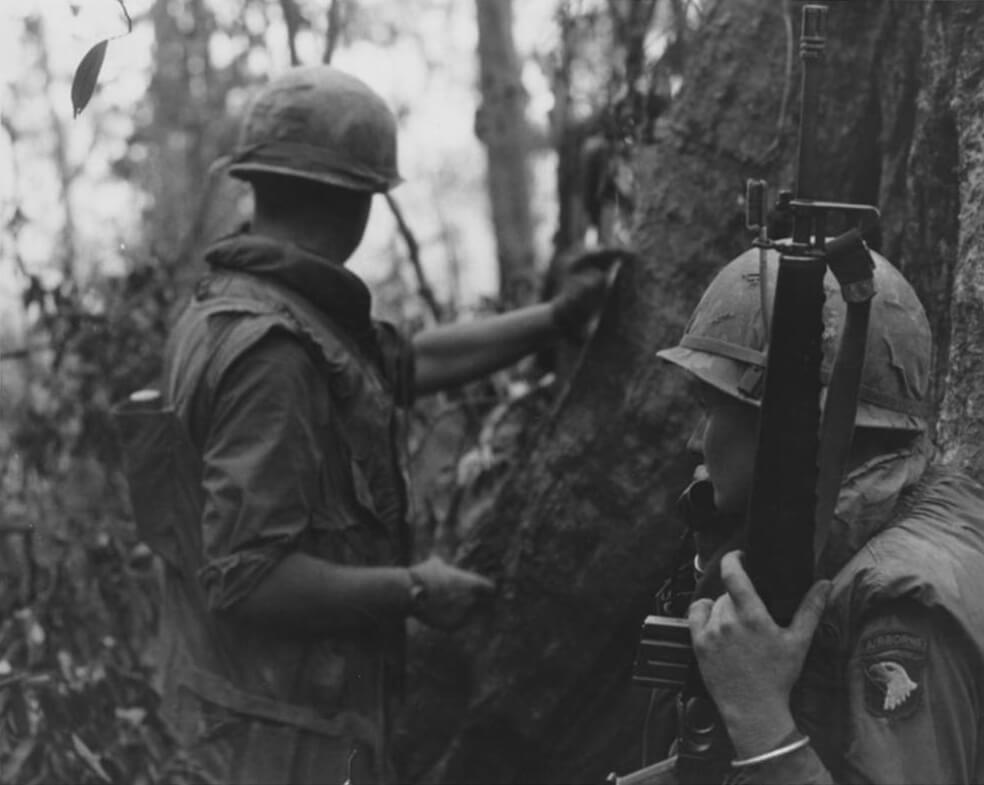
The M16’s teething travails are well documented. Congress got involved, as did some justifiably livid parents of fallen servicemen. The end result was ultimately a tried, proven and effective weapon that has subsequently influenced every modern combat rifle in the world.
While the subsequent M16A1 was smaller, lighter and handier than the M14 it replaced, there yet remained a need for something even tidier. Special Forces, aviators, dog handlers and similar special troops needed a rifle-caliber weapon that was easier to tote than a full-sized, 20”-barreled M16 rifle. Beginning in 1965, the military began to explore the innate modularity of Stoner’s revolutionary design. This resulted in the XM177 (or “CAR-15”).
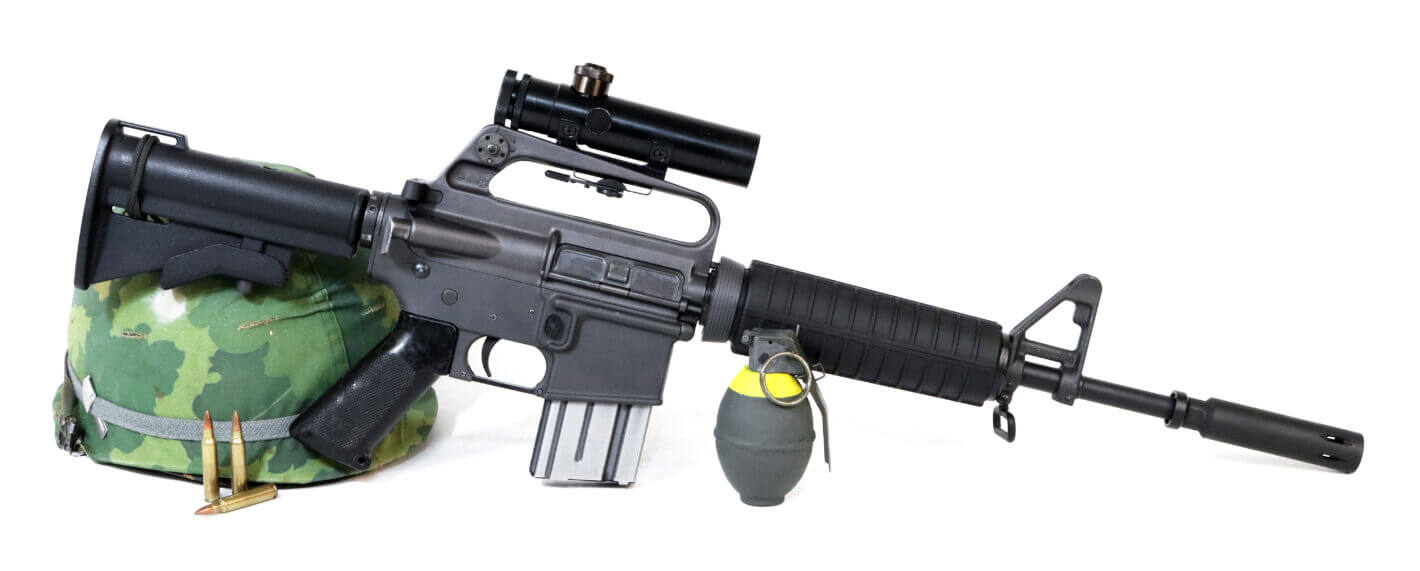
The XM177 used the same basic chassis as the M16 but featured either a 10″ or 11.5″ barrel and collapsible buttstock. As the buffer recoiled into the butt through a receiver extension with the AR design, the new collapsible stock design slid rather than folded. The handguards on this new carbine were also redesigned such that the two halves were interchangeable. The previous triangular design used on the M16 had unique left and right versions, complicating logistics.
Onward and Upward
The XM177 was a popular weapon in Vietnam, but the U.S. Army found itself in a bit of a funk once the war finally sputtered to a close. In the early 1980s, the Big Green Machine was redefining itself and found a need for an improved version of the XM177. In January of 1984 an Army QRP (Quick Reaction Program) resulted in a product-improved version of the XM177 titled the XM4 Carbine.
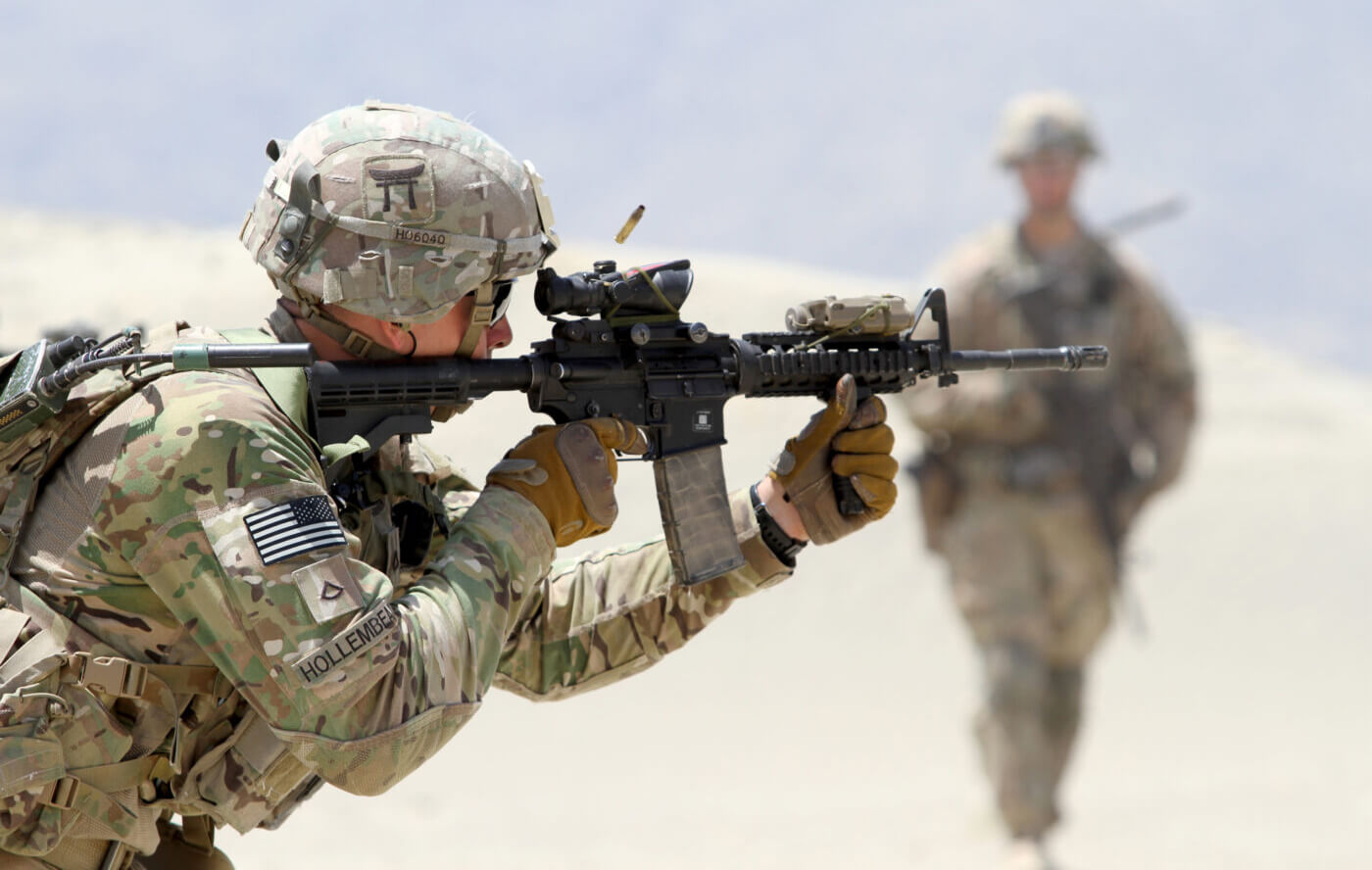
The XM4 righted many of the intrinsic wrongs of the XM177. Predominant among these was the adoption of a 14.5-inch barrel with a 1-7” twist rate. These numbers were experimentally determined to be the best balance between portability and downrange performance. It took a minute, but the M4 Carbine lifted off like a cockroach in a campfire.
Civilian Siblings
But our tale takes an unexpected turn. Up until this point, the military drove the development of the M16 family of rifles. However, American civilians acquired an interest in semi-automatic-only black rifles of their own. American civilian shooters really couldn’t get enough.
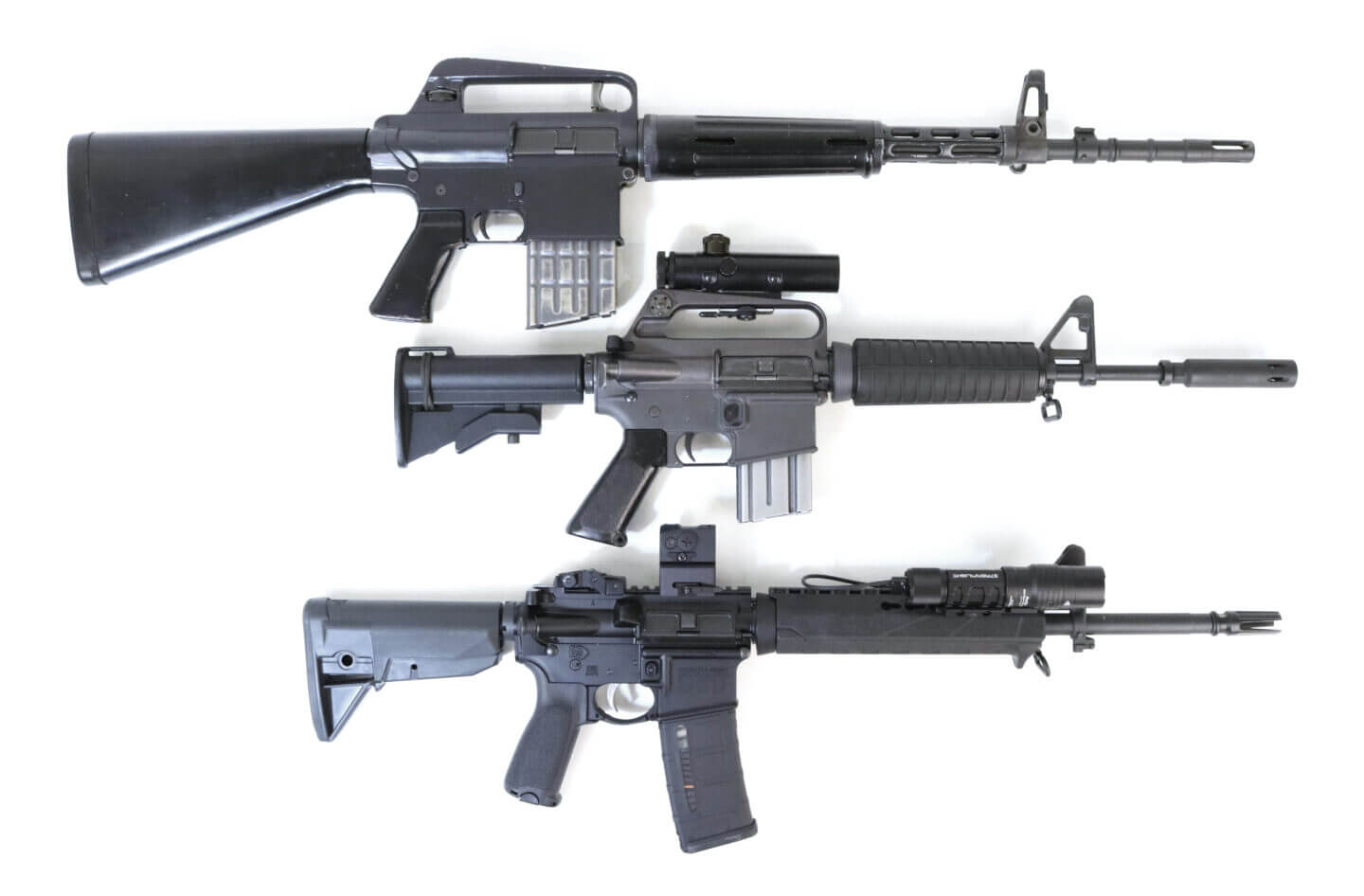
Capitalism, not government or educational institutions, is the primary engine driving revolutionary innovation. If there’s money in it, the best and the brightest will start competing. In the case of the M4, this meant a truly bewildering array of widgets, optics, configurations and accessories all synergistically designed to make Mr. Stoner’s timelessly modular black rifle even better.
Appreciate the scale. As of 2009, there were 20.5 million soldiers under arms around the globe. That’s one out of every 330 human beings. At the same time, there were around 400 million firearms in American civilian hands. We American civilian shooters own 20 times as many guns as there are soldiers in all the world’s armies combined.
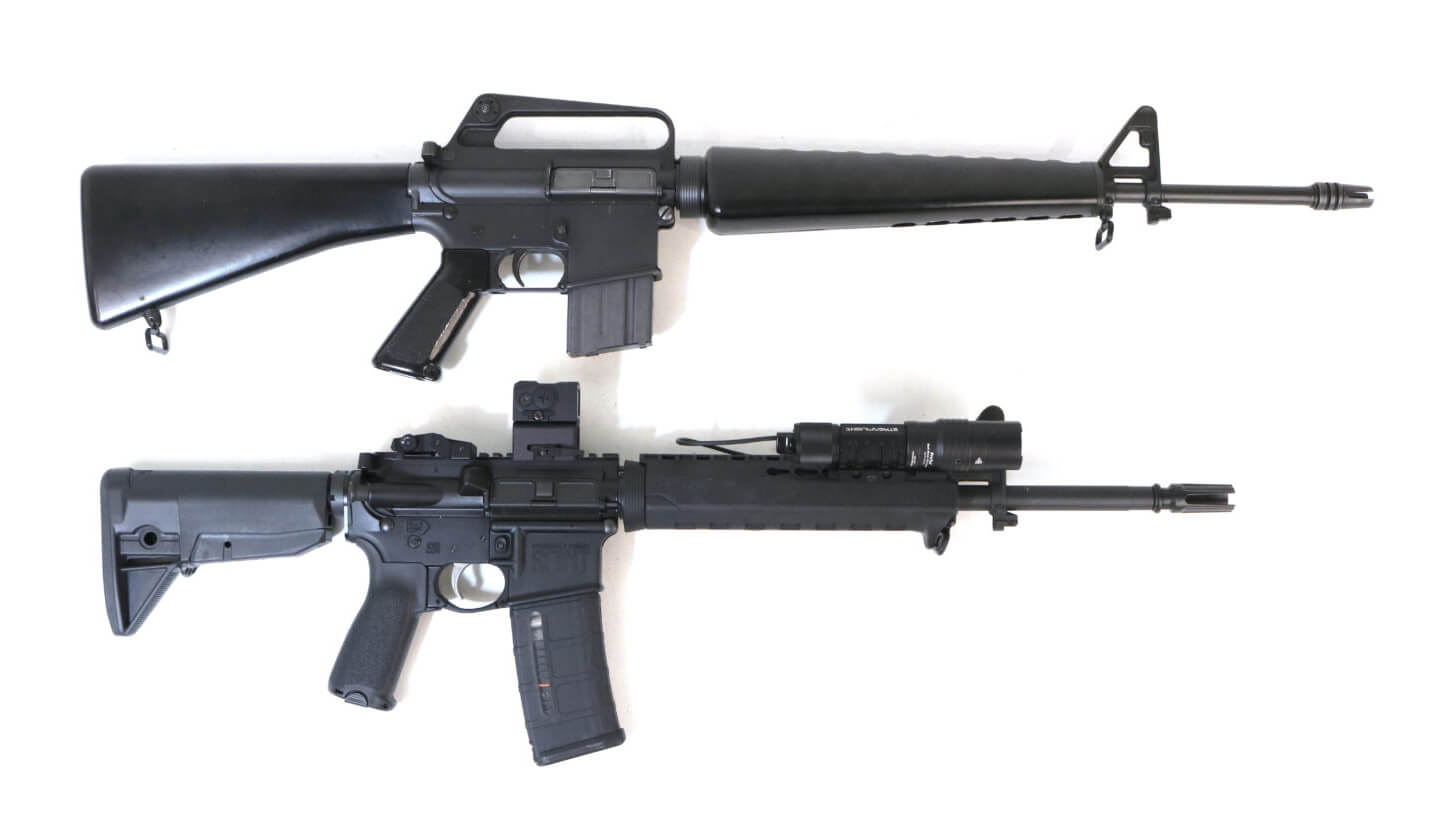
Nowadays COTS (Commercial Off-the-Shelf) guns and gear drawn from the American civilian market shape the military landscape and vice versa. This curious cross-pollination brings us the lights, lasers, optics and sundry accessories that make our good guns great. The ultimate iteration of that unstoppable evolutionary process is curiously not the latest, greatest military M4 variant. It is the Springfield Armory SAINT.
Heavenly Ascension
The SAINT family is broken up into the SAINT, SAINT Victor and SAINT Edge families. Each of these offer a range of options and features with differing price points. However, all are built on a solid foundation of rock-solid quality and top-notch features.
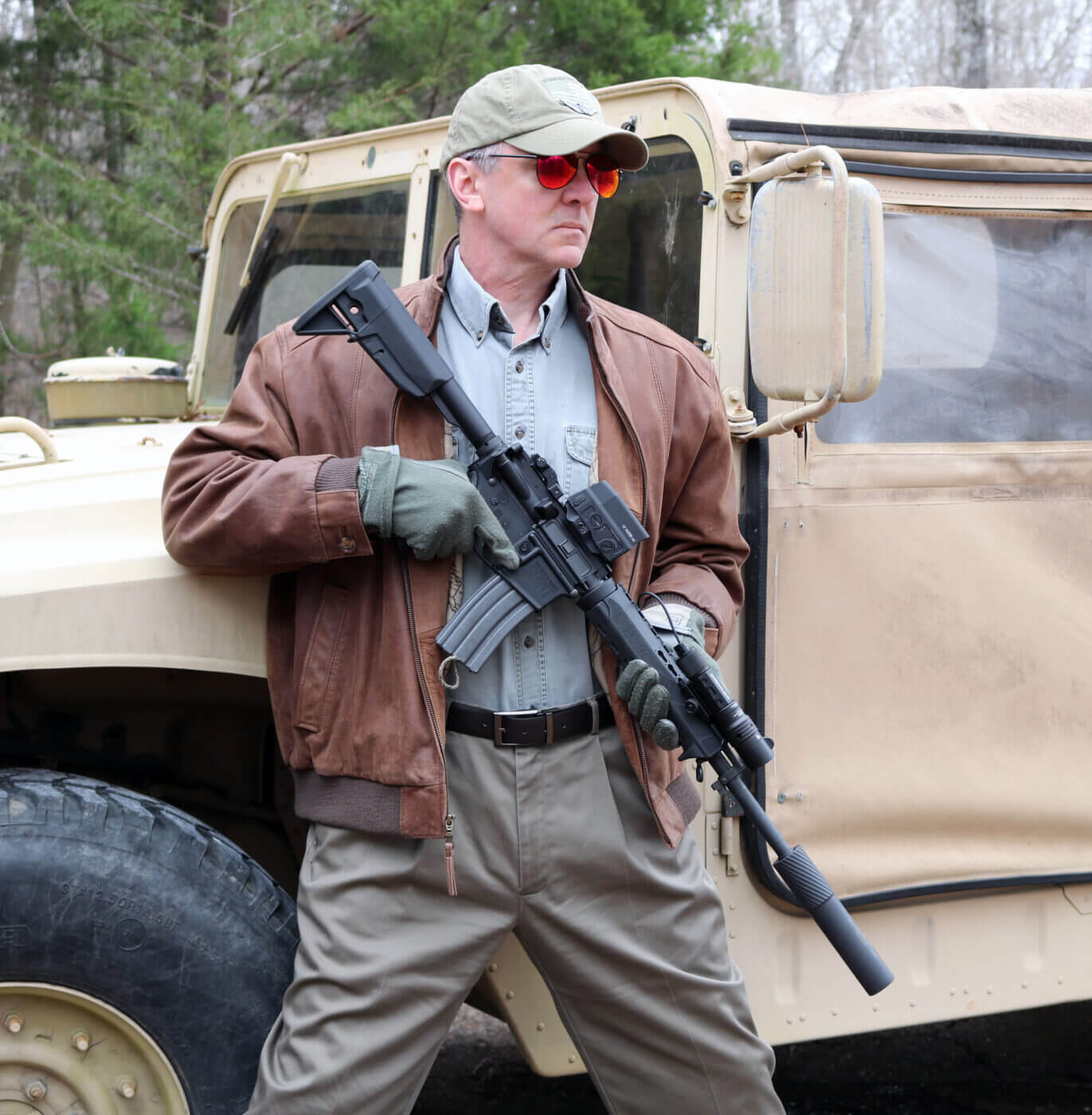
SAINTs sport a 16″ Melonite-treated barrel (with a 1-8” twist in 5.56mm that is optimized for common defensive loads). Nickel boron-coated fire controls keep the trigger smooth and precise, while forged upper and lower receivers will outlive your grandchildren’s kids. The Accu-Tite tensioning system excises any potential wiggle from the receiver interface. At 6 lbs., 11 oz., the basic SAINT is easy to carry and eminently maneuverable. Reliability is the end result of half a century of steady mechanical evolution and development.
In addition, the SAINT line has expanded to include a version in .308 in the SAINT Victor series, as well as a line of AR pistols offered in 5.56, .300 BLK and even .308.
Even today, the SAINT continues to evolve and improve. I was an early adopter myself, and the latest guns offer tweaks to the furniture and an array of new models and options not imagined back when I first bought my SAINT.
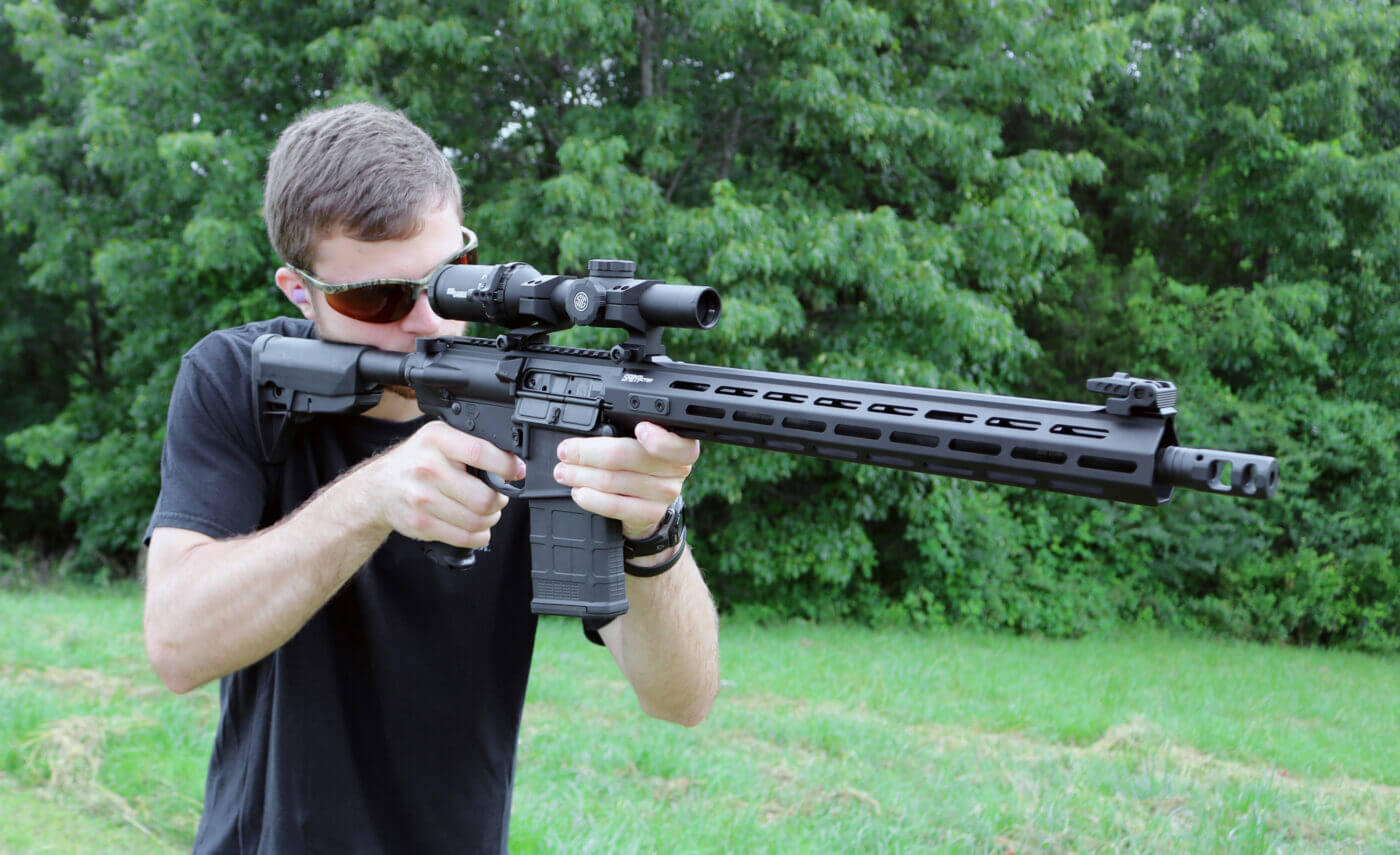
In the Springfield Armory SAINT family of rifles and pistols, we see the ultimate example of mechanical evolution in action. Begun from a foundation set nearly seven decades ago, the AR has grown and evolved into a refined, capable and genre-defining platform — and the SAINT represents the cutting edge of this evolutionary ascent.
Due to an ATF ruling regarding the configuration of pistols with stabilizing braces, these firearms can be subject to NFA (National Firearms Act) regulations as short-barreled firearms. It is the buyer’s responsibility to comply with all rules, restrictions and/or laws determined by your city or state. Please ensure you are up-to-date on all current laws.
Editor’s Note: Please be sure to check out The Armory Life Forum, where you can comment about our daily articles, as well as just talk guns and gear. Click the “Go To Forum Thread” link below to jump in!
Join the Discussion
Featured in this article
Continue Reading
Did you enjoy this article?

 170
170




